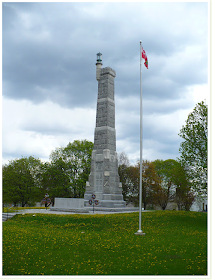From 1942 to 1945, over 8,000 aircraft such as the Bell Bell P-63 Kingcobra were ferried from the U.S. to the U.S.S.R.through Canada and the Alaska-Siberia Air Road.
Lend-Lease
In
1941, the United States began supplying Great Britain matériel to help
them in their war efforts against Germany. Since U.S. law prevented the
Government from extending credit to Great Britain and only permitted
cash sales of war matériel, the supplies were on "loan" (1941
Lend Lease Act).
The
Lend-Lease act allowed the U.S. to supply items needed for national
defence to Great Britain and almost forty other countries including the
U.S.S.R. whose defence was crucial to the United States. The program
cost nearly $51 billion from 1941 to 1946 with most aid going to the
British Empire ($31 billion) and the Soviet Union ($11 billion).
USA-USSR Lend-Lease Agreement
In October, 1941, the U.S. and the U.S.S.R. entered into a Lend-Lease agreement American Lend-lease deliveries to the Soviet Union included aircraft, trucks, tanks, motorcycles, locomotives and railway cars, anti-aircraft cannons and machine-guns, submachine guns, explosives, field radios, radar systems, as well as foodstuff, steel,
other metals, chemicals, and oil and gasoline.
Lend-Lease Routes to the U.S.S.R.:
1. North Atlantic Arctic Convoys : to Murmansk and Arkhangelsk in northern
Russia
2. Persian Corridor : through Iran into Soviet Azerbaijan
3. Pacific Route : to Vladivostok by Soviet ships
4. Alaska- Siberia Air Route
This post deals with the delivery of aircraft across the 6,000 mile Alaska-Siberia air route.
The Northwest Staging Route and Alaska-Siberia Air Road (ALSIB)
From
1942 to 1945, the United States sent over 8,000 military aircraft to
the U.S.S.R. through Alaska.
The aircraft were ferried from factories in California, the U.S. Midwest
and northeast to Edmonton, then flown along the Northwest Staging Route
to Fairbanks where Soviet pilots took possession of the planes and flew
them over the
Bering Strait to Krasnoyarsk [the Alaska-Siberian air road (ALSIB)] and then to the
battle fronts.
Northwest Staging Route and Alaska-Siberian Air Road
a) The Northwest Staging Route : 1942 -1945
The
Northwest Staging Route consisted of airfields built or upgraded about
every 150 km (100 miles) from Edmonton, to Fairbanks, Alaska. The airfields were connected by the the Alaska Highway.
Northwest Staging Route
U.S. Alaskan Wing, Air Transport Command : RCAF Station Edmonton
The
Edmonton station became the headquarters of the U.S. Alaskan
Wing, Air Transport Command. Two routes from the United States met in
Edmonton. One route
originated at Great Falls Army Air Base, Montana, where aircraft bound
for Russia were ferried from their manufacturing plants in Southern
California. In late 1943, a second route originating at Minneapolis,
Minnesota for aircraft manufactured in the Midwest and northeastern
United States was inaugurated.
U.S.
Army Post Office (#462) located at the Edmonton base handled the mail
for the American servicemen and personnel stationed at Air Transport
Command. The covers below were mailed from Edmonton.
U.S. Army Postal Service No. 462, Edmonton to Harrisburg, Pa., March 17, 1944
Although
U.S. Army Post Office (A.P.O.) no. 462 was located at the RCAF Edmonton
base, the actual locations of the APOs was not given in the return
address.
U.S. Army Post Office #462, Edmonton, March 17, 1944
Free surface mail to the United States
The
second cover was from the Office of Field Director, The American Red
Cross to New Haven, October 18, 1944. Free mail service had not been
extended to the Red Cross.
U.S. Army Post Office #462 to New haven, Conn., October 18, 1944
3 cents surface letter rate to the United States
b) Alaska- Siberia Air Road
The aircraft flown by
American crews to Fairbanks, Alaska, were handed over to the Soviets and ferried to Krasnoyarsk
in Siberia by specially selected Soviet pilots of the Ferry Aviation Division.
The Ferry Aviation Division consisted of five
ferry regiments (PAP), each of which was responsible for a certain part
of the route:
1 PAP -
Fairbanks-Uelkal (1.500 km),
2 PAP - Uelkal-Seimchan (1.450 km),
3 PAP - Seichan-Yakutsk (1.167 kin),
4 PAP - Yakutsk-Kirensk (1.331 km),
5 PAP - Kirensk-Krasnoyarsk (965 km).
In Krasnoyarsk "ordinary"
pilots took over, flying the newly arrived aircraft westwards via Omsk,
Sverdlovsk and Kazan to Moscow for further distribution to frontline
units. ALSIB-ferry crews were returned to Fairbanks by the Yakutsk-based regiment.
ALSIB
Aircraft Types Ferried
Three main types of combat aircraft were ferried to the Soviet Union under Lend-Lease:
- Fighter aircraft - Bell P-39 Airacobas and Bell P-63 Kingcobras
- Bombers - Douglas A-20 Havocs and North American B-25 Mitchells
- Transport Aircraft - Douglas C-47 Skytrains
Russian crews in Nome gather under the wing of a U.S. bomber destined for the Russian-German battlefront.
2006 Lend-Lease Monument : Fairbanks, Alaska
In August, 2006, U.S. Secretary of Defence Donald Rumsfeld and his
Russian counterpart Minister of Defence Sergei Ivanov were among the
many international political, military, and diplomatic officials who
participated in the opening of the Lend-Lease Memorial in Fairbanks.

























































